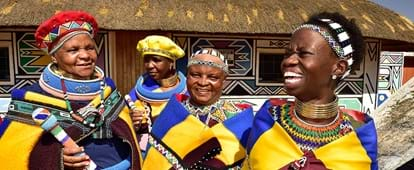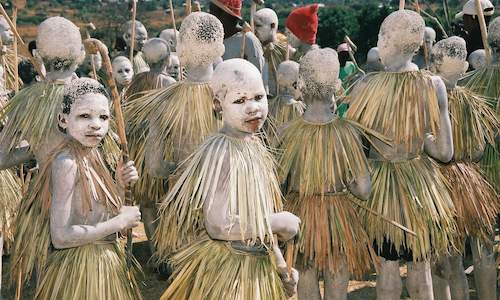Little Known Facts About South African Culture Today.
Little Known Facts About South African Culture Today.
Blog Article
South African Culture Today Fundamentals Explained
Table of ContentsHow South African Culture Today can Save You Time, Stress, and Money.See This Report about South African Culture TodayAn Unbiased View of South African Culture TodayExcitement About South African Culture TodayGet This Report about South African Culture Today9 Easy Facts About South African Culture Today Explained
A matter of significance in Zambian towns is the passing away of loved ones. All members of the town put cash, time and initiative together for the burial of the deceased.Throughout the grieving duration; men stay outside your home and the women stay inside your home of the deceased. After speaking about the departed, the village strolls to the area of burial to say their last goodbyes. Music and dance is an extremely crucial facet of the Zambian society. The various tribal systems have their own dancing forms; nevertheless, makishi is typical amongst all tribes.
See This Report on South African Culture Today
When it comes to songs, drums are made use of the most, with a range of drumming events. In Zambia, majority of the individuals are Christian; Protestant and Roman Catholic. There are little groups of Muslims and Hindus, with the rest adhering to regional native tribal beliefs.

South African heritage and society is greatly diverse, and includes various teams of individuals who each have their own customs and beliefs. Having such a variety of people and cultures is what makes South Africa so unique. In truth sense of the expression, we are a rainbow country.
South Africa has roughly 3 hundred thousand Portuguese people living in it. Making it the 7th on the listing of countries with one of the most Portuguese people in it outside of Portugal. Portuguese is not only a society, but it is additionally a language and a nationality. Portuguese people stem from the nation of Portugal in Europe, nevertheless, because of Portugal (like several other nations in Europe) exploring the globe and dominating various other countries during the 15th 20th centuries, South Africa has what we call Portuguese South African's living in it.
7 Easy Facts About South African Culture Today Described
Amongst the famous attributes of the topography is a plateau that covers nearly 2 thirds of the center of the country. The plateau complicated increases towards the southeast, where it climaxes in the Drakensberg variety, part of a cliff that divides the plateau from the coastal locations. The Drakensburg consists of Champagne Castle, the highest peak in the nation.
The region north of the Witwatersrand, called the bushveld, inclines downward from east to west towards the Limpopo River, which forms the international border. The western area of the plateau, the middleveld, additionally comes down towards the west and varies in elevation in between the highveld and bushveld. Between the Drakensburg and the eastern and southern shoreline, the land descends to the sea.
Nearer the coast there is a low-lying plain called the eastern lowveld. Southwest of the plateau the nation becomes gradually extra arid, paving the way to the hostile desert of the Great Karroo, verged on the east by the reduced, better watered plateau of the Little Karroo. Separating the completely dry southern inside from the sandy coastal of the southerly coastline and West Cape is an additional variety, the Langeberg.
Facts About South African Culture Today Revealed
The country's racially, ethnically, and politically separated history has generated nationwide and subnational signs that still operate as icons of the country, and others icons that are approved only by particular teams. The monuments to white inhabitant occupation and political supremacy, such as the Afrikaner Voortrekker ("pioneer") Monument in Pretoria and the Rhodes Monument recognizing the British colonial empire contractor and Cape head of state Cecil Rhodes, continue to be sectarian signs.
The initial modern-day residents were the San ("bushman") hunter-gatherers and the Khoi ("Hottentot") peoples, who rounded up livestock (South African culture today). The San might have been existing for countless years and left evidence of their presence in hundreds of ancient cave paints ("rock art"). Bantu-speaking clans that were the ancestors of the Nguni (today's amaZulu, amaXhosa, amaSwazi, and vaTsonga peoples) and Tswana-Sotho language teams (today's Batswana and Southern and Northern Basotho) moved down from east learn the facts here now Africa as very early as the fifteenth century

The two previous republics of the Orange Free State and Transvaal (South African Republic) were established by Afrikaner inhabitants that defeated and dispossessed the Basotho and Batswana. Lesotho would have been by force integrated right into the Orange Free State without the extension of British defense in 1869. The supreme marriage of the nation resulted from the South African Battle (18991902) in between the British and the two Afrikaner republics, which minimized the nation to spoil at the beginning of the twentieth century.
Afrikaners traditionally considered themselves the only real South Africans and, while giving complete citizenship to all citizens of European descent, refuted that condition to people of color until the autonomous shift of 1994. British South Africans keep a sense of cultural and social link to Great Britain without compromising their identification as South Africans.
South African Culture Today for Dummies
The diversity and fragmentation within ethnic groups and the More Bonuses balance of tensions in between those teams throughout the twentieth century avoided interethnic civil conflict. While intergroup tensions over sources, privileges, and political prominence stay, those problems are as most likely to match Zulu versus Zulu as Zulu against Xhosa or African against Afrikaner.
From colonial India, British merchants and administrators brought the curved metal ornamental roofings and slim shoelace work pillars that still symbolize the outdoor patios of homes in communities and cities throughout the country. Holy places add an essential building element even in the smallest towns. Along with the rising steeples and timeless stonework of Afrikaans Dutch Reformed churches, Anglican churches, synagogues, mosques, and Hindu temples offer selection to the spiritual building scene.

Slaughtering and the brewing of standard grain beer are vital in securing the involvement and goodwill of the forefathers who are considered the guardians of good luck, success, and health. Indian neighborhoods preserve their indigenous culinary practices and use them on Islamic and Hindu ritual and ceremonial events. Afrikaners and Coloured individuals gather at weekends and special events at multifamily bbqs called braais, where community bonds are reinforced.
Because this was the key economic venture of both black Africans like this and white colonists, problem between those teams fixated the ownership of grazing land and livestock. In 1867, the largest ruby down payments on the planet were discovered at Kimberley in the west central location. The riches from those fields aided fund the exploitation of the biggest gold reef in the globe, which was discovered on the Witwatersrand in 1886.
South African Culture Today for Dummies
This caused misunderstandings and deliberate misstatement in the dealings of white settlers and federal government authorities with African chiefs during the early american duration (South African culture today). In the establishment of African gets, some facets of common and chiefly "tribal trust" land period were maintained, and also in white rural areas, forms of common tenure were still exercised in areas with African communities
After the autonomous makeover of 1994, programs for land restitution, redistribution, and reform were set up, however progress has actually been slow. The white minority still controls eighty percent of the land. Following agricultural land intrusions in Zimbabwe, the Department of Land Affairs has actually promised to speed land redistribution.
Report this page